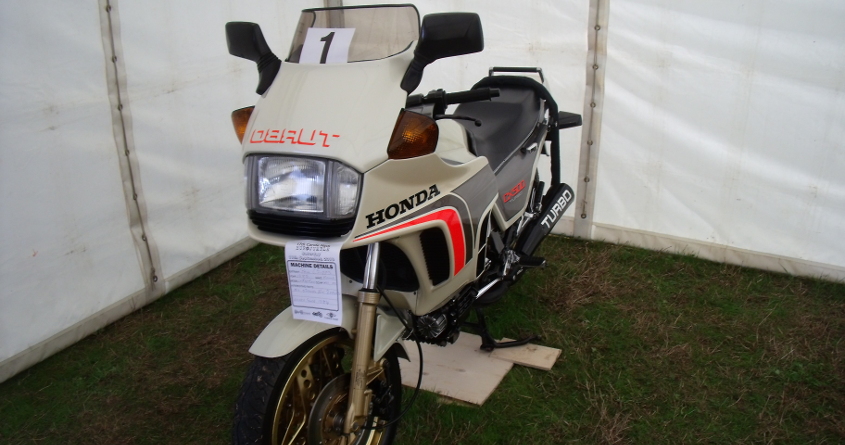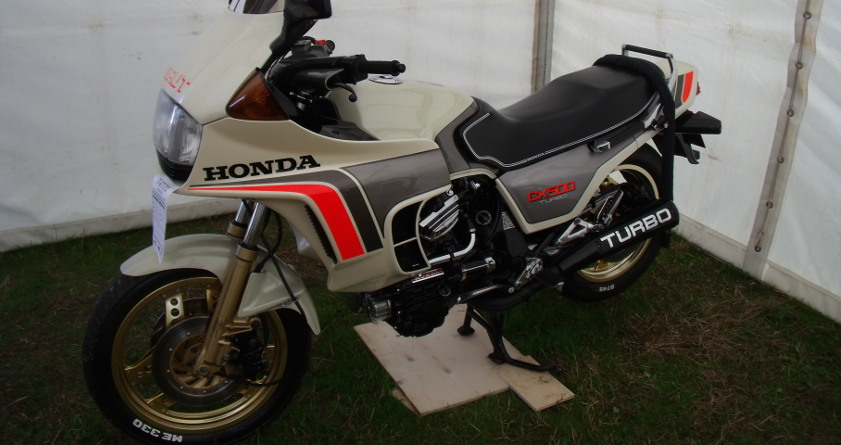Honda CX500 Turbo Obrut
Bike of the week - do we love it or hate it?
Once upon a time in the 1980s the Japanese motorcycle manufacturers fell under a turbo spell and from about 1982 to 1985 they offered the modern motorcyclist a forced induction factory turbo motorcycle option. In 1982 Honda came out with the first, designed-from-scratch turbocharged motorcycle the Honda CX500. What a dragon that turned out to be!
The first turbo charged motorcycles had appeared on the scene earlier, for example the 1978 Kawasaki Z1R TC, but they were effectively just a normal old school motorcycle with the turbo charger added on as an afterthought, to up the sales.
Tough Enough To Turbo
Honda spotted the potential of the turbo, but decided that it warranted a whole new design of motorcycle to be able to handle the power and speed of the turbo, with enough control and agility.
The plan was for Honda to really begin at the beginning with every detail of the motorcycle scrutinised at the design stage to build a bike for optimum performance and style. Honda factored in the frame, engine, fairings, suspension and braking in designing a motorcycle that they hoped would be tough enough to turbo!
A twin cylinder liquid cooled motorcycle engine was chosen instead of an inline four, so this lent itself to the transverse mounted CX V-twin which Honda was developing. The engine was reinforced to make sure that it could cope with the stresses of turbo forced induction, the pistons were forged and larger end and main bearings were implemented along with thicker block castings. The cooling system was also more robust so that it could cope satisfactorily with the heat from the turbo charger. The clutch was built larger to handle the extra turbo power as well. Finally the compression ratio was lowered from 10:1 in the original CX to 7.2:1 for the turbo version, to protect it from the possibility of detonation.
50 Heads Are Better Than One - Or Are They?
As well as all these challenges there was the poser of how to add turbo charging and electronic fuel injection to a V-twin engine. So complicated was the project that the Honda team were famously said to have had 50 engineers working on it at one point. And well ahead of its time the fuel injection system received, then processed information from seven sensors and an electronic air flow meter which was then processed by two control maps.
Honda also decided to have a special 48mm compressor developed for the forced induction engine of the CX which created a 77 horsepower boost at 19PSI compared to 47 horsepower from the existing CX engine.
This labour of love from Honda’s workshops - after an age of trial and error, innovation and problem solving - eventually gave Honda a CX500 Turbo which could rip up to an eventual top speed of 125 MPH past a quarter mile in 12.38 seconds at 106 MPH.
The frame was full of innovations too with TRAC (Torque Reactive Anti-dive Control) on the front fork which was designed to stop the nose from diving when the front brake was applied.
Added to all these ideas was a wind tunnel developed fairing which looked ultra- modern (at the time).
Warp Drive!
All in all this was a really immensely complicated motorcycle – dare we say over complicated – which has been said to combine a pedestrian ride with not much happening, until the tachometer reached 5,500 RPM, and then the bike would lurch forward into scary warp drive.
So despite all Honda’s engineering efforts and the team of 50 scratching their bonces, this was not a motorcycle which took off and zoomed its way into the hearts of the motorcycling public, alas for Honda it only lasted for a single model year. It was swiftly replaced by the CX 650 Turbo but even that didn’t make it for long and Honda eventually found out that forced induction was perhaps not a favourite amongst the public – hey ho Honda – you still meet the nicest people on a Honda.
Anyone ever ridden or owned one of these turbo dragons? If so what was your verdict have we been too harsh or not harsh enough?



